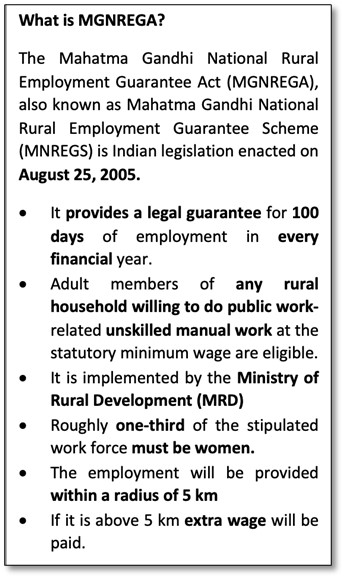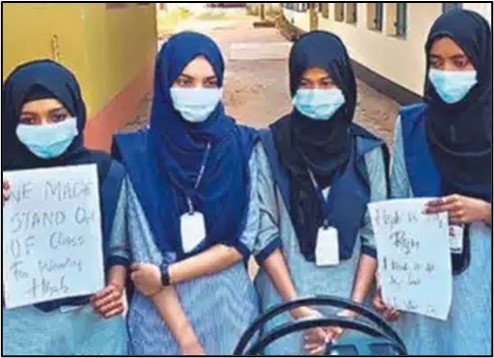Friday, 11th February 2022
‘Jailed for doing business’ report
In News
A report by TeamLease RegTech and the Observer Research Foundation titled, ‘Jailed for doing business’ delves into the compliance burden on Indian firms.
Many laws and compliances for Indian businesses
- The legislations, rules and regulations enacted by the Union and State governments have over time created barriers to the smooth flow of ideas, organisation, money, entrepreneurship and through them the creation of jobs, wealth and GDP.
- There are 1,536 laws that govern doing business in India, of which 678 are implemented at the Union level.
- Within these laws is a web of 69,233 compliances, of which 25,537 are at the Union leve
- These compliances need to be communicated to the governments through 6,618 annual filings.
- The changes in compliance requirements, to the tune of an average of 10 regulatory changes every single day, occur constantly and add to business uncertainty.
- By taking one policy tool — imprisonment — this report highlights the excesses of overregulation and the resultant regulatory cholesterol while doing business in India.
Criminalising Non-compliance
- The biggest challenges come from the continuance of imprisonment as a tool of control.
- Of the 1,536 laws that govern doing business in India, more than half carry imprisonment clauses.
- More than half the clauses requiring imprisonment carry a sentence of at least one year.
- Laws like the Companies Act, 2013, The Factories Act, 1948 and even minor ones like the Legal Metrology Act, 2009, the Electricity Act, 2003, the Motor Vehicles Act, 1988 contain clauses that criminalize non-compliance, with jail term as high as 10 years.
- Several of these clauses criminalise process violations, while some of them punish inadvertent or minor lapses rather than wilful actions to cause harm, defraud, or evade.
- For some laws, delayed or incorrect filing of a compliance report is an offence whose punishment stands on par with sedition under the Indian Penal Code, 1860.
- The largest number of imprisonment clauses are found in labour laws, with more than 50 such clauses per law, second comes industry laws.
Problems with criminalizing
- Historically, in Mahabharata to Arthashastra, criminality was never a part of punitive action against businesses in ancient India. Financial penalties constituted most of the punitive action.
- Excessive regulation has made compliance a full-time department of firms, and placed an unnecessary burden on micro, small and medium enterprises (MSMEs).
- A typical MSME with more than 150 employees faces 500 to 900 compliances that cost Rs 12 lakh to Rs 18 lakh a year.
- It furthers the rent-seeking climate in the bureaucracy which has been validated by anecdotal and analytical evidences.
- Programmes like ‘Make in India’, ‘Ease of doing business’ etc. get stalled due to the regulatory burden of criminalised laws. Several companies remain small to stay below the radar of compliance burden.
Measures taken by the government
- Amendment of Labour laws and the subsumption of the 29 central labour laws into four labour codes—Code on Wages, 2019; Occupational Safety, Health and Working Conditions Code, 2020; Code on Social Security, 2020; and Industrial Relations Code, 2020 – will reduce the imprisonment provisions by half.
- All the States are yet to implement the labour codes.
Way forward
The report lists recommendations to ease the regulatory compliance burden:
Sources:
Environmental Impact of Fly ash
In News
Recently, NGT passed a first of its Kind order on environmental jurisprudence of Fly Ash in India.
About the News
- The National Green Tribunal decided to club eight ongoing cases on fly ash mismanagement and accidents filed between 2013 and 2020.
- It is perhaps the first time the courts have recognised the public health costs of fly ash mismanagement in India.
- This is a significant acknowledgement of the country’s fly ash crisis and could usher in better regulations to govern such infrastructure.
What are the major issues?
- Ash ponds and avalanche: Embankments of coal fly ash ponds often collapses, triggering an avalanche of ash slurry in the neighbouring areas.
- Ash accumulation: Huge accumulated fly ash is not being utilised nor scientifically stored, the ponds/dykes are not properly maintained resulting in polluting water sources, air and land, apart from adverse health effects and damage to the flora and fauna.
- Storage facility: There are serious gaps in storage of fly ash in ponds, in plant operators’ efforts to prevent fugitive emissions, in pollution monitoring and control technologies like flue gas desulfurization and in online continuous emission monitoring systems.
- Lack of standard: Standards on fly ash ponds are poor resulting in “great disasters”. India has no such guidelines, which has resulted in dangerous practices in fly ash management, including unstable installations.
- Poor utilisation: Official data says 92.06% of the 222 million tonnes of ash generated in India is “utilised” in accordance with the Fly Ash Notification. But the term ‘utilisation’ in this context is a misnomer: it includes disposal activities like reclamation of low-lying areas, agricultural use and even export to other countries, like Bangladesh.
- Lack of Regulation: The failure of India’s regulatory agencies to develop a comprehensive set of scientific guidelines for ash pond design has been a serious policy lacuna.
- Hazard: All coal ash contains arsenic, lead, selenium, hexavalent chromium and mercury. Over time, heavy metals in the ash escape into nearby waterways or leach into groundwater and contaminate water sources. Exposure to coal ash has been linked to heightened cancer risk, heart damage, reproductive problems, neurological disorders and other serious health conditions.
Important Highlights of the NGT order
- Streamlining the monitoring process: Tribunal directed the Centre to constitute a ‘Fly Ash Management and Utilisation Mission’ comprising of secretaries from the ministries of environment, coal and power and the chief secretaries of the two states.
- Need for Action Plan: Preparation of an action plan aimed at plugging the big gap in storing, handling, management and utilisation of fly ash. The mission will be financed through CSR funds, and also act as an environmental restoration and compensation fund responsible for relief compensation for affected people.
- Restoration of ecosystem: The judgement also emphasised the need to restore deteriorated ecosystems by bringing down the Comprehensive Environmental Pollution Index (CEPI) scores in these areas, restoring damaged or degraded areas, and arranging for public health facilities, including proper water supply.
- Accountability: Project proponents to be held accountable for past violations and were obligated to remedy the violations.
- Adequate standards: Tribunal directed the government to issue guidelines on siting, design and engineering standards for the location, disposal, maintenance and regulation of ash ponds.
- Risk assessment: The bench also directed the government to carry out ‘public health and risk impact assessment’ in areas where such facilities operate. The NGT also emphasised the development of on-site and off-site crisis management plans regarding fly ash ponds and dykes.
- Public health risk: This is perhaps the first time the courts have recognised the public health costs of fly ash mismanagement. The public health impact of coal ash residues from thermal power plants have been documented however, its impacts have been modestly studied in comparison to stack emissions. The exact composition of the ash depends on the type of coal burned.
Sources:
Environmental Impact of Fly ash
In News
Recently, NGT passed a first of its Kind order on environmental jurisprudence of Fly Ash in India.
About the News
- The National Green Tribunal decided to club eight ongoing cases on fly ash mismanagement and accidents filed between 2013 and 2020.
- It is perhaps the first time the courts have recognised the public health costs of fly ash mismanagement in India.
- This is a significant acknowledgement of the country’s fly ash crisis and could usher in better regulations to govern such infrastructure.
What are the major issues?
- Ash ponds and avalanche: Embankments of coal fly ash ponds often collapses, triggering an avalanche of ash slurry in the neighbouring areas.
- Ash accumulation: Huge accumulated fly ash is not being utilised nor scientifically stored, the ponds/dykes are not properly maintained resulting in polluting water sources, air and land, apart from adverse health effects and damage to the flora and fauna.
- Storage facility: There are serious gaps in storage of fly ash in ponds, in plant operators’ efforts to prevent fugitive emissions, in pollution monitoring and control technologies like flue gas desulfurization and in online continuous emission monitoring systems.
- Lack of standard: Standards on fly ash ponds are poor resulting in “great disasters”. India has no such guidelines, which has resulted in dangerous practices in fly ash management, including unstable installations.
- Poor utilisation: Official data says 92.06% of the 222 million tonnes of ash generated in India is “utilised” in accordance with the Fly Ash Notification. But the term ‘utilisation’ in this context is a misnomer: it includes disposal activities like reclamation of low-lying areas, agricultural use and even export to other countries, like Bangladesh.
- Lack of Regulation: The failure of India’s regulatory agencies to develop a comprehensive set of scientific guidelines for ash pond design has been a serious policy lacuna.
- Hazard: All coal ash contains arsenic, lead, selenium, hexavalent chromium and mercury. Over time, heavy metals in the ash escape into nearby waterways or leach into groundwater and contaminate water sources. Exposure to coal ash has been linked to heightened cancer risk, heart damage, reproductive problems, neurological disorders and other serious health conditions.
Important Highlights of the NGT order
- Streamlining the monitoring process: Tribunal directed the Centre to constitute a ‘Fly Ash Management and Utilisation Mission’ comprising of secretaries from the ministries of environment, coal and power and the chief secretaries of the two states.
- Need for Action Plan: Preparation of an action plan aimed at plugging the big gap in storing, handling, management and utilisation of fly ash. The mission will be financed through CSR funds, and also act as an environmental restoration and compensation fund responsible for relief compensation for affected people.
- Restoration of ecosystem: The judgement also emphasised the need to restore deteriorated ecosystems by bringing down the Comprehensive Environmental Pollution Index (CEPI) scores in these areas, restoring damaged or degraded areas, and arranging for public health facilities, including proper water supply.
- Accountability: Project proponents to be held accountable for past violations and were obligated to remedy the violations.
- Adequate standards: Tribunal directed the government to issue guidelines on siting, design and engineering standards for the location, disposal, maintenance and regulation of ash ponds.
- Risk assessment: The bench also directed the government to carry out ‘public health and risk impact assessment’ in areas where such facilities operate. The NGT also emphasised the development of on-site and off-site crisis management plans regarding fly ash ponds and dykes.
- Public health risk: This is perhaps the first time the courts have recognised the public health costs of fly ash mismanagement. The public health impact of coal ash residues from thermal power plants have been documented however, its impacts have been modestly studied in comparison to stack emissions. The exact composition of the ash depends on the type of coal burned.
Sources:
SAMRIDH Initiative
In news
Atal Innovation Mission (AIM), NITI Aayog, and the U.S. Agency for International Development (USAID) have announced a new partnership under the Sustainable Access to Markets and Resources for Innovative Delivery of Healthcare (SAMRIDH) initiative recently.
About the News
- Access to affordable healthcare: The new collaboration aims to improve access to affordable and quality healthcare for vulnerable populations in tier-2 and tier-3 cities, rural and tribal regions.
- Targets Vulnerable section: It focuses on enhancing SAMRIDH’s efforts to reach vulnerable populations, utilising AIM’s expertise in innovation and entrepreneurship.
- Public Sector resources and capital to scale up healthcare solutions: AIM and SAMRIDH will leverage philanthropic capital, and public sector resources to offset barriers for commercial investments in small and medium health enterprises to invest in and scale healthcare solutions.

Need for such initiative
- Persistent disruption by the pandemic: Given the disruptions triggered by the pandemic, and its continued threat, the healthcare sector is the most important one that requires an accelerated pace of reform and increased investments.
- Enhances affordable and quality services: Such partnerships ensures all citizens specifically the vulnerable access to affordable and quality healthcare services.
- Increased Capital Flow: Innovative financing opportunities like blended finance, that leverages philanthropic funding to reduce the risk for commercial investments, enables increased private capital flows to fill the current financing gap in health sector.
- This will build an enabling ecosystem for innovation adoption in health systems.
- Need for a holistic approach: As AIM and SAMRIDH will seek solutions from innovators and entrepreneurs on diverse domains such as
- strengthening the healthcare infrastructure
- improving diagnostic products and services
- building the capacity of healthcare workers
- tactics for communication & behavior change and
- most importantly, focus on mental health solutions for both healthcare providers and patients recovering from the pandemic, collaborations of this kind is the need of the hour for their holistic approach.
Source:
World Unani Day
On February 11, 1 868, Hakim Ajmal Khan, a Unani physician, an educationist and the founder of scientific research in Unani System of Medicine, was born. He was also one of the founders of Delhi’s Jamia Millia Islamia University and was appointed the first Chancellor of the University in 1920. He served as a Chancellor till his death in the year 1927. Hakim Ajmal Khan was a versatile genius and along with being an eminent physician and social reformer, the man was a spiritual healer, a herbalist and a distinguished Unani clinician. Khan had a career in politics too. He became the founding Member and President of the All-India Muslim League. He also served as the president of Indian Congress. Unani system of medicine aims to help people in living a healthy life. Unani medicine is also safe and cost effective.

Source:
Namami Gange Mission
In News
The Economic Survey 2021-22 has discussed the various targets achieved by the Namami Gange Mission.
What is the Namami Gange Mission?
- Namami Gange Mission, is an Integrated Conservation Mission, approved as ‘Flagship Programme’ by the Union Government in June 2014 with budget outlay of Rs.20,000 Crore.
- Under the Environment (Protection) Act, 1986, the National Mission for Clean Ganga (NMCG) has been notified as an authority, which is also the nodal agency responsible for monitoring and implementing the Namami Gange Mission.
- The activities undertaken as part of the Mission rest upon four pillars –
- Nirmal Ganga (Unpolluted Flow),
- Aviral Flow (Continuous Flow),
- Jan Ganga (People-River Connect) and
- Gyan Ganga (Research and Knowledge Management).
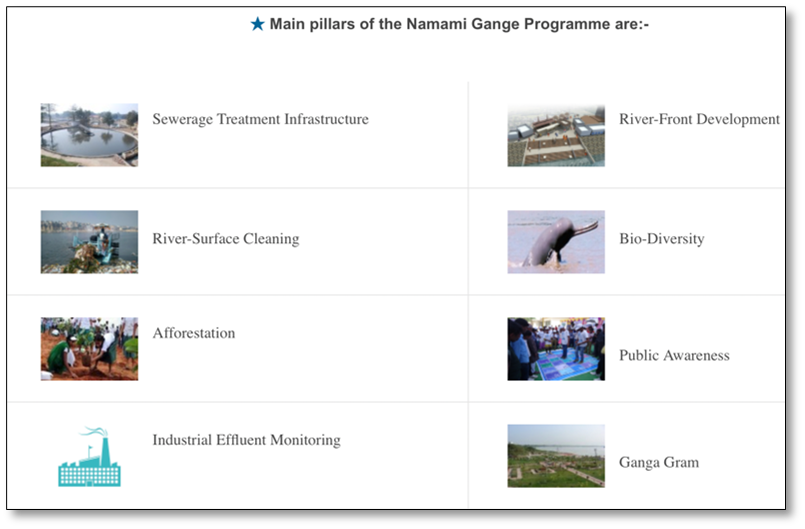
Findings of the Economic Survey 2021-22 w.r.t the Namami Gange Mission
- As of December 2021, a total of 363 projects worth ` 30,841.53 crores have been sanctioned under the mission. The Clean Ganga Fund (CGF) was established in 2014 with the contributions received from the residents of the country, NRIs/ PIO, corporates and organizations, received a total of ` 561.58 crore, as of 31st December 2021,.
- Under the Nirmal Ganga (Unpolluted Flow) component of the mission, 160 sewerage projects have been sanctioned at a cost of ` 24,568 crores as of December 31, 2021. Sewerage infrastructure projects has the highest number of projects in Uttar Pradesh (43), followed by Bihar (29) and Uttarakhand (26).
- Grossly Polluting Industries (GPIs) along River Ganga have been inventoried. Since 2015, sector specific charters for implementation of cleaner technology, upgradation of treatment facility and adaptation of waste minimization practices have been implemented in the major industrial sectors like pulp & paper, distilleries, sugar and textile by involving different stakeholders.
- To ensure Aviral Flow (Continuous Flow) of the Ganga, ecological flow notification mandating the minimum flow of river Ganga was released in 2016, recognizing the right of the river over its own water.
- Other steps in this direction include afforestation of 29,000 Ha; first of its kind river bio-diversity assessment for the main stem Ganga river covering over 2,200 km; identification of 279 wetlands for conservation; and preparation of integrated management plan for 118 wetlands.
- The Jan Ganga (People-River Connect) component acknowledges the critical importance of strengthening the people-river connection in achieving the mission objectives. Ganga Quest 2021 got an enthusiastic response from 113 countries. Ganga Utsav 2021 was celebrated for the first time as a river festival extending beyond Ganga basin cities.
- The River City Alliance was launched in November 2021, as a platform for river cities in India to ideate, discuss, and exchange information for the sustainable management of urban rivers.
- Under the Gyan Ganga (Research and Knowledge Management) component, the Ganga Knowledge Centre was set up to create a state-of-the-art centre to support the NMCG and create a comprehensive knowledge base on Ganga. In addition, the Centre for Ganga Management & Study was set up at IIT Kanpur for long term basin studies and technology development.
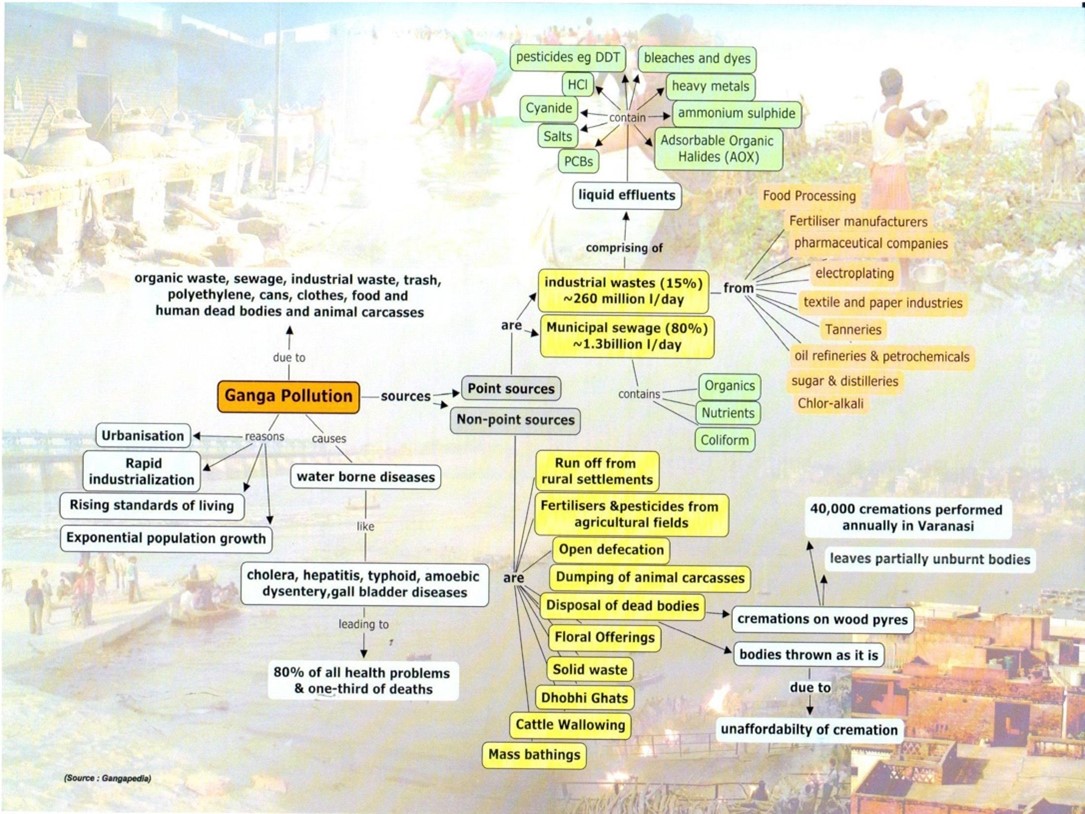
But, Despite the Success Stories, the Mission has failed on several fronts
- CAG Findings: A report by the Comptroller and Auditor General (CAG) found obstructions in the Ganga cleaning process due to factors like unused funds, the absence of a long-term plan and lack of pollution abatement works.
- Sewer treatment Capacity: Despite 160 STPs having been sanctioned under the Namami Gange programme since 2014, only 50 per cent of the sewage flowing into the river is treated at present. Projected sewerage generation in the year 2035 in Uttarakhand is 122 MLD while the existing treatment capacity is 97.6 MLD.
- Problems with the Concept of STPs: Only building STPs is not the answer to Ganga’s pollution woes. When the Sewer can be treated by traditional concepts of septic tanks, which are built at the point of sewer discharge, there will be no need to take the sewer to the STP through pipes. Even the design of the upcoming STPs have been questioned by the NGT.
- River Front Development: While the river front development will serve an aesthetic purpose, it does not serve to the cleanliness or flow of the Ganga.
- Industrial Effluents Monitoring Stations: Real Time Effluent Monitoring Stations (EMS) has been installed in Grossly Polluting Industries (GPIs). However, industrial effluents monitoring has done little to check rising presence of harmful elements in the river, including chromium, evidenced in rising cases of cancer being witnessed among communities living along the stretch.
- Ganga Gram: Excessive focus on human waste, through construction of toilets in Ganga basin villages and make them Open Defecation Free (ODF), contributes majorly to rising water pollution levels in the river. There is need to focus more on chemical effluents from industries.
- Focus on Infrastructure: The project has become more about sewage and effluent management and a lot less about improving the quality or quantity of flow across the river’s length of 2,500 km. The fixation with treatment plants, toilets and beautification has made it more of an infrastructure project with little concern for nature’s hydrological cycle.
Way Forward
- The concept of ‘sewage-free’ water need to be seriously considered, which would mean all treated waters will need to be recycled and reused in the towns and cities that produce them, even as the river’s flow is completely supported by water from the Himalaya, currently stored in reservoirs in the river’s upper reaches.
- It’s time to understand the Ganga more deeply from a hydrological perspective, through automated flow gauges and water quality sensors, linked to automated reservoir operations that ensure minimum flow in across different sections of the river. This will help flush the pollution loads.
- The project design needs to incorporate externalities linked to mining, environmental degradation, the climate emergency, seismicity, floods, landslides, flood-bank encroachment, marine environment and groundwater recharge.
- The government should place measurable indicators of the performance of the Clean Ganga in the public domain. The success needs to be measured in terms river discharge, colour, floating matter, pollution load, odour, livelihood, fish varieties and availability of water for bathing.
- There is need to adopt a bottom-up approach to set up need-based solutions. Ultimately success should be measured through issues that resonate with stakeholders, not by counting the number of structures erected or the amount of money spent.
- Global practices have moved beyond centralised sewage systems because they are unsustainable. Decentralised and energy-neutral sewage treatment plants that can recover fertilisers, bio-plastics, cellulose and even protein are the way to do. India needs to develop a business model to recover secondary products, including water, to enable a sewage-free Ganga.
Question: Discuss the various issues associated with the Namami Gange Mission. What can be the steps taken to resolve these issues?
Sources:
Thawing of Arctic permafrost
This is image of thawing of Arctic permafrost that may release cancer-causing gas. According to a new study, thawing of permafrost due to climate change could expose the Arctic population to much greater concentrations of the invisible, lung cancer-causing gas Radon. Radon is an invisible, odourless, naturally occurring radioactive gas. It causes approximately one in 10 lung cancer deaths and affects smokers much more than non-smokers. It causes higher death rates in sub-Arctic communities due to the prevalence of smoking. Permafrost has historically acted as a protective barrier, blocking radon from travelling to the surface and entering buildings there. Radon is known to be the second most important cause of lung cancer after smoking. Smoking also exacerbates radon-acquired lung cancer rates by about 26 times, and smoking is up to 4.4 times more prevalent in Arctic communities.
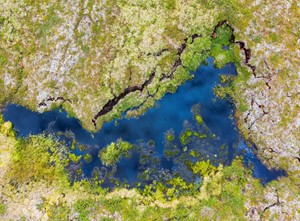
Source:
Coastal Vulnerability Index
- Context: Indian National Centre for Ocean Information Services (INCOIS) has recently carried out coastal vulnerability assessment for the entire Indian coast to prepare a Coastal Vulnerability Index (CVI).
- This assessment will bring out an Atlas comprising of 156 maps that would determine the coastal risks associated with future sea-level rise based on the physical and geological parameters along the Indian coast.
- A coastal Multi-Hazard Vulnerability Mapping (MHVM) was carried out using parameters like sea level change rate, shoreline change rate, high-resolution coastal elevation etc., which can be used to derive the composite hazard zones that can be inundated along the coastal low-lying areas due to extreme flooding events.
- Vulnerability assessments can be useful information for coastal disaster management and building resilient coastal communities.
- INCOIS is an autonomous body under Ministry of Earth Sciences (MoES) that provides information on Potential Fishing Zone, Ocean State Forecast, Tsunami Early Warning, etc., through dedicated ocean modeling, observations, computation facilities etc.

Source:
Image source:
Nuclear Fusion
- Context: Scientists in the UK have achieved a new milestone in producing nuclear fusion energy imitating the way energy is produced in the Sun.
- Nuclear Fusion reactions generally power the Sun and other stars.
- In a fusion reaction, two light nuclei merge to form a single heavier nucleus. The process releases energy because the total mass of the resulting single nucleus is less than the mass of the two original nuclei.The leftover mass becomes energy.
- Energy by nuclear fusion is one of mankind’s long-standing quests as it is low carbon, safer than how nuclear energy is produced today and has an efficiency that can technically exceed a 100%.
- The energy was produced in a machine called a tokamak, a doughnut-shaped apparatus in which Deuterium and tritium (isotopes of hydrogen) were heated to temperatures 10 times hotter than the centre of the sun to create plasma.
- This was held in place using superconductor electromagnets, that, as they spin around, fuse and release tremendous energy as heat.
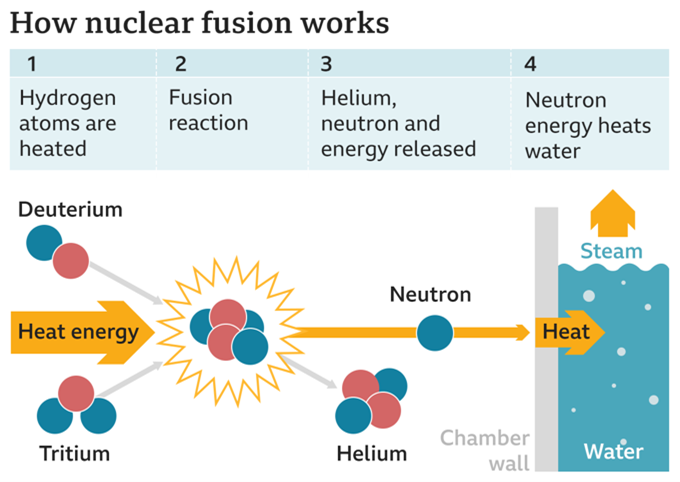
Source:
- Scientists set new record in creating energy from nuclear fusion
- UK scientists make major nuclear fusion energy breakthrough: Everything you need to know
Image source:
Unusual High Pollution in Mumbai
- Context: With its Air Quality Index (AQI) reading above 300, Mumbai has seen unusually high levels of pollution of late.
- AQI is a mean of pollutants such as particulate matter (PM2.5 and PM10), ozone (O3), nitrogen dioxide (NO2), sulphur dioxide (SO2) and carbon monoxide (CO) emissions, derived as a single value.
- An AQI between 301 and 400 is categorized as ‘red’ or ‘very poor’. The higher the AQI, the greater the level of air pollution and more serious is the health concern.
- The current high pollution is due to a second dust storm that originated over Afghanistan, Pakistan, and the border areas of Rajasthan that hit the city. This storm originated on February 3 over Afghanistan, Pakistan, and the border areas of Rajasthan.
- Sand and dust storms usually occur when strong winds lift large amounts of sand and dust from bare, dry soils into the atmosphere.
- They are usually caused by thunderstorms – or strong pressure gradients associated with cyclones – which increase wind speed over a wide area.
- Sand and dust storms are common meteorological hazards in arid and semi-arid regions.
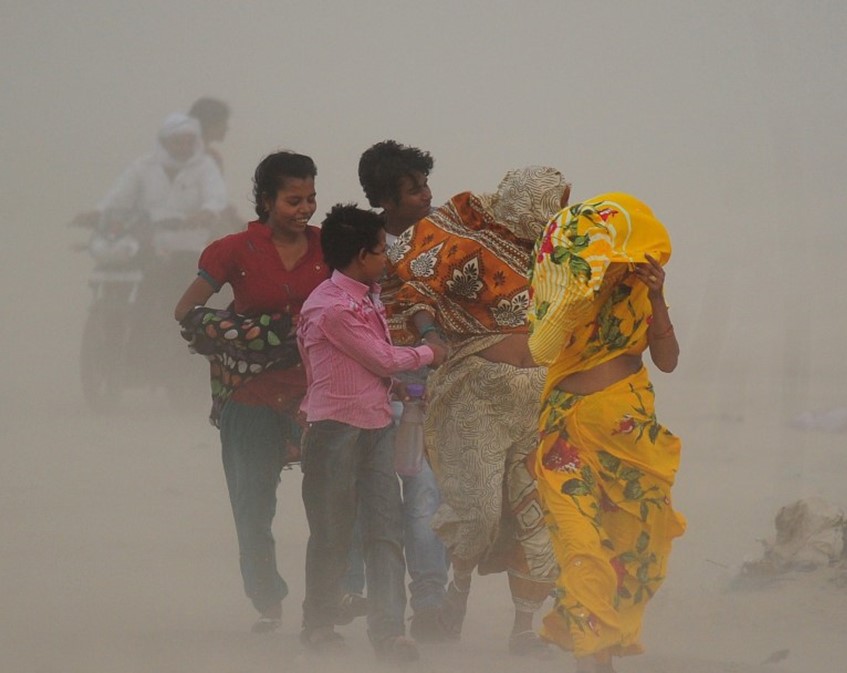
Source:
- Explained: Dust storm and no winds – what’s behind the air pollution in Mumbai
- Second successive dust storms make Mumbai air quality worse than Delhi
Image source:
White-Cheeked Macaque - Edukemy Current Affairs
- Context: Scientists from the Zoological Survey of India (ZSI) have recently spotted white-cheeked macaque in Arunachal Pradesh.
- White-Cheeked Macaque (Macaca leucogenys) are mammal species discovered in 2015 from the Modog region in southeastern Tibet. It is the last mammal to have been discovered in Southeast Asia.
- This takes India’s mammal count from 437 to 438.
- They are distinct from other macaques in terms of white cheeks, long and thick hairs on the neck area, and a longer tail.
- Macaques are monkeys with fur of varying shades and arms and legs of same length. The tail length varies among each species from long, moderate, short to sometimes totally absent.
- White Cheeked Macaque has not been yet included in the Wildlife (Protection) Act, 1972 of India.

Source:
- Scientists find White-Cheeked Macaque in Arunachal Pradesh
- Meet India’s newest mammal: White Cheeked Macaque
Image source:
India’s balancing act between Russia and the US amidst growing tensions: ORF
Essence: The editorial talks about India’s diplomacy which is walking the fence, on one side of which is the relationship with its longstanding trusted partner Russia, while on the other is USA, its partner in the growing futuristic world of technology, trade, people exchange, etc. Situation day by day seems to grow grave at Russia-Ukraine border with amassing of soldiers, routine drills and possibility of fabricated videos on alleged attacks across the border. Even despite India’s abstention at UNSC procedural voting, USA has clearly stated that its relationship with India has not been impacted by the ongoing tensions with Russia. On the other hand, other geopolitical updates through QUAD and USA’s Indo-Pacific strategy associating itself with India have irked Russia.
Both powers vouch to go the distance to impose “military-technical consequences” and unprecedented sanctions. China has been the beneficiary through greater Russia-China allied interactions. In this regard, it is a cautious development for India to have an ally associate with China, the most imminent threat.
Thus, India keeps its channel open with all stakeholders, through strategic S-400 deal with Russia and agreements like LEMOA, COMCASA, BECA, DTTI, ISA, etc. with USA. Both powers have come to support of India’s bid for permanent seat in UNSC, entry into NSG, etc. Tactical and strategic moves have helped India to steer ahead even during times of geopolitical instability.
Why should you read this article?
- To understand the vulnerabilities at Ukraine border.
- To know how India handles the contradicting interests of opponents as a neutral stakeholder.
Source:
Finding a safe approach to public finance: IE
Essence: The article starts with revealing the fissures in the economy which depicts unequal nature of recovery in the economy. At one end, the data shows India’s swift recovery and at the other end the service sector is struggling to cope up. Though the data for tax collection shows the resilience in tax paying population, the impact on non-tax paying population remains unmeasured. Government faces a dilemma between taxpayers’ expectation of a tax cut and government’s need for money to ramp up social sector spending. With no other avenues to raise tax, the government focused on administrative reforms for the better realization of taxes.
The finance bill provided an option to the taxpayer to submit an updated return within two years of assessment. The government has limited measures at its disposal to reduce disputes and lower unrealized taxes. But the citizens should not base their long-term decisions on this, because the moment normalcy is back, the government will find ways to raise taxes.
Why should you read this article?
- To understand the nature of fissures in the Indian economy.
- To understand how the different macroeconomic parameters shows varied view with respect to the growth of the economy.
- To understand the limited options available with the government in order to increase the tax collection.
Source:
Local job laws that raise constitutional questions: TH
Essence: The legitimacy of the Haryana State Employment of Local Candidates Act, which reserves 75% of private sector positions in the state for local people, has been questioned. Several issues involving public employment, such as Andhra Pradesh, have appeared time to time. In 2002, the Supreme Court stated that reservations can be granted for backward classes of people, but that they cannot be made purely based on location or domicile, and that "great caution must be used and a specific case must be made out" in doing so. So, the State must create a special case of extraordinary circumstances in order to modify the 50% upper limit on reservations. To achieve the goal of equality is to live in a society that is built on caste dominance rather than equality. The Haryana Act does not enhance "caste rule," as it applies to all residents of the state, regardless of caste, but it does violate the Indian Constitution's principle of equality for all people. These regulations raise concerns about India's national identity. Such measures would have negative economic consequences, such as increasing income disparity between states. While the courts consider whether these laws infringe fundamental rights, they should also consider if they contradict the Constitution's core framework, which regards India as a single nation made up of states.
Why should you read this article?
- To have a comprehensive understanding of the Haryana State Employment of Local Candidates Act.
- To have a better understanding of the constitutional issues posed by the Haryana Act.
- To understand how the Haryana Act differs from other state-enacted legislation and what the next steps could be.
Source:
Neoschool
Background
- Education plays a major role in the life of a person. But, the disruption caused by the pandemic, the flow of imparting education has got disrupted.
- Online classes came up to counter the disruption, but a one-of-its kind school started to give students a broader experience of schooling online.

About the School
- Aanand Srinivas, an engineering graduate from Bengaluru started the Neoschool model, which is world’s first such school.
- He understood that the regular lecturing is not an effective teaching method, so he started an interactive classroom after school.
- The classes are customised to achieve focused learning of the students in small groups of 6 under one coach.
- The curriculum is beyond the regular school syllabus which provides and international school experience at a low price.
- The course focuses on the emerging need of knowledge in various profession and provides a platform to study about them.
- At present Neoschool has over 100 coaches and more than 1 lakh students, both sections of whom come from all over the country, especially metro cities. Other than dispensing with the international standard of schooling at a normal price, Neoschool also benefited teachers who faced difficulty in finding jobs during the pandemic.
Quote: “The task of the modern educator is not to cut down jungles, but to irrigate deserts.“ - C. S. Lewis
Source:
Share the article
Get Latest Updates on Offers, Event dates, and free Mentorship sessions.

Get in touch with our Expert Academic Counsellors 👋
Frequently Asked Questions
UPSC Daily Current Affairs focuses on learning current events on a daily basis. An aspirant needs to study regular and updated information about current events, news, and relevant topics that are important for UPSC aspirants. It covers national and international affairs, government policies, socio-economic issues, science and technology advancements, and more.
UPSC Daily Current Affairs provides aspirants with a concise and comprehensive overview of the latest happenings and developments across various fields. It helps aspirants stay updated with current affairs and provides them with valuable insights and analysis, which are essential for answering questions in the UPSC examinations. It enhances their knowledge, analytical skills, and ability to connect current affairs with the UPSC syllabus.
UPSC Daily Current Affairs covers a wide range of topics, including politics, economics, science and technology, environment, social issues, governance, international relations, and more. It offers news summaries, in-depth analyses, editorials, opinion pieces, and relevant study materials. It also provides practice questions and quizzes to help aspirants test their understanding of current affairs.
Edukemy's UPSC Daily Current Affairs can be accessed through:
- UPSC Daily Current Affairs can be accessed through Current Affairs tab at the top of the Main Page of Edukemy.
- Edukemy Mobile app: The Daily Current Affairs can also be access through Edukemy Mobile App.
- Social media: Follow Edukemy’s official social media accounts or pages that provide UPSC Daily Current Affairs updates, including Facebook, Twitter, or Telegram channels.

